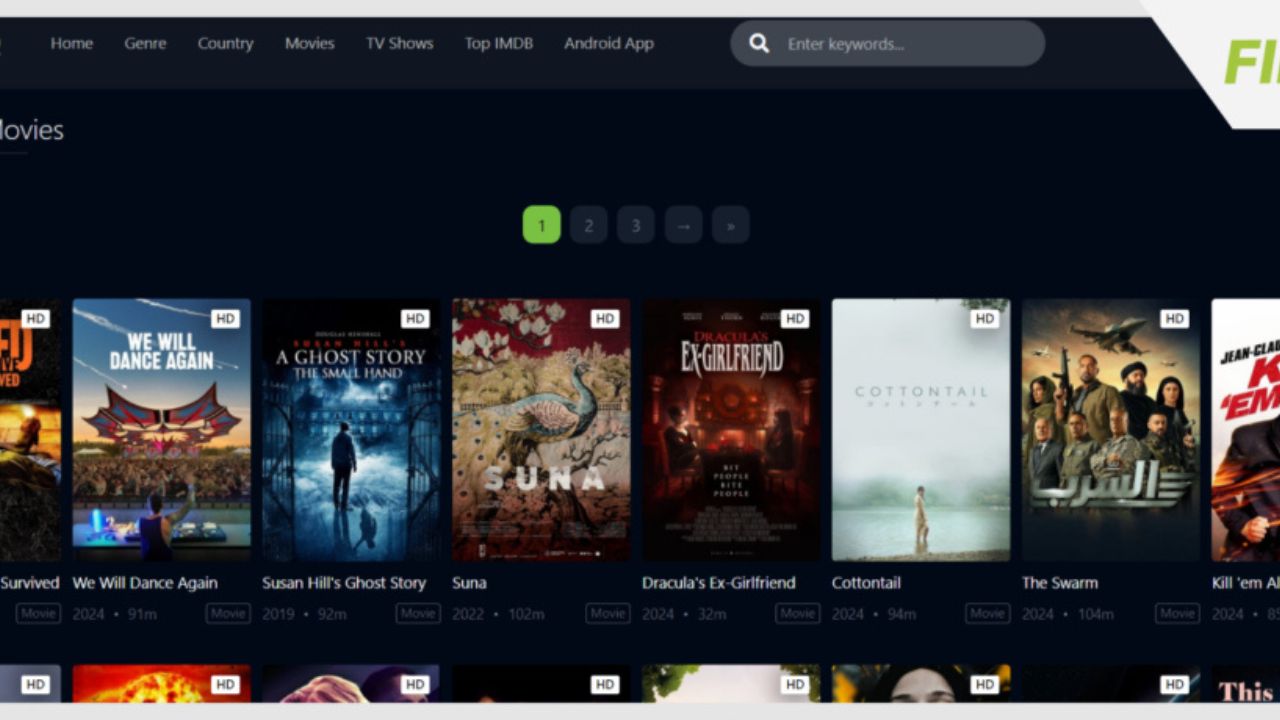Have you felt a sudden urge to move your feet and sway to the music? Perhaps you’ve stumbled upon a lively line dancing video, or attended a wedding where everyone seemed to know the moves. Line dancing is not just a fun way to get your groove on—it’s also a fantastic way to improve fitness, meet new people, and reduce stress. If you’re curious about jumping into the world of line dancing, you’ve come to the right place. This guide will walk you through finding line dancing classes and locations Line Dancing Near Me ensuring that you can dance to your heart’s content.
What is Line Dancing?
Line dancing is a choreographed dance with repeated sequences of steps, where dancers are arranged in one or more lines. It’s performed to a variety of music genres, from country to pop. The beauty of line dancing lies in its simplicity; you don’t need a partner, making it accessible to anyone willing to learn.
The origins of line dancing can be traced back to folk dances of Europe. Over time, it evolved and gained popularity in the United States, particularly in country-western music scenes. Today, line dancing isn’t limited to country tunes; it embraces various music styles, making it a versatile dance form.
Line dancing is inclusive and community-oriented. In many classes, you’ll find a mix of beginners and seasoned dancers. It’s a great way to connect with others while learning something new. Whether you’re an experienced dancer or a complete novice, line dancing offers a welcoming environment for all.
Benefits of Line Dancing
There are numerous benefits to taking up line dancing, beyond just having a good time. Firstly, it’s an excellent form of exercise. Dancing helps improve cardiovascular health, increases flexibility, and enhances muscle strength. It’s a workout that doesn’t feel like a workout!
Additionally, participating in line dancing classes can boost mental health. Learning and remembering dance steps challenge the mind, keeping it sharp. Plus, the social aspect of dancing in a group can reduce feelings of loneliness and enhance your mood through shared experiences.
Finally, line dancing is a fantastic stress reliever. The rhythmic movement to music allows you to forget about daily worries. Plus, the endorphin release from physical activity provides natural stress relief. All these benefits make line dancing an enjoyable and holistic activity for both body and mind.
Finding Line Dancing Classes in Your Area
The first step in your line dancing adventure is finding a class near you. Start by checking community centers and local dance studios. These venues often offer classes for different skill levels, ensuring that there’s something for everyone.
Another excellent resource is online search platforms like Google or Yelp. Simply type “line dancing classes near me” to see a list of nearby options. Don’t forget to check the reviews and ratings to help you choose the best class for your needs.
Social media platforms and local event pages can also be invaluable in your search. Join community groups on Facebook or check out local event listings. You might find pop-up line dancing events or regular classes led by experienced instructors.
Choosing the Right Class for You
Selecting the right class depends on several factors, including your experience level and personal preferences. Beginners should look for classes labeled “introductory” or “beginner-friendly.” These classes focus on teaching basic steps and routines, providing a solid foundation for new dancers.
Consider the type of music you prefer. If you love country music, look for classes that cater specifically to this genre. If your tastes are more diverse, find a class offering a mix of musical styles. The right soundtrack can make a significant difference in your enjoyment of the class.
Lastly, consider the class size and atmosphere. Some people thrive in larger groups, while others prefer a more intimate setting. Visit a few classes to see where you feel most comfortable. Remember, line dancing is about having fun, so choose a class where you feel relaxed and excited to learn.
Popular Line Dancing Venues
Certain venues have become synonymous with line dancing, offering regular classes and events. Dance halls and honky-tonks are traditional hotspots for line dancing, often featuring live music and enthusiastic crowds. These venues create an authentic atmosphere that enhances the overall experience.
Community centers and recreation centers are also popular, providing a more structured class environment. These venues often employ professional instructors who guide participants through each step, making them ideal for beginners.
Don’t overlook local bars and clubs, many of which host line dancing nights. These events are a fantastic way to practice your skills in a lively, social environment. Plus, they offer the opportunity to meet fellow dance enthusiasts while enjoying a night out.
Tips for Your First Line Dancing Class
Before attending your first class, here are some tips to help you prepare. First, wear comfortable clothing and shoes. Sneakers or dance shoes with a smooth sole are ideal, as they allow you to pivot easily without sticking to the floor.
Arrive early to give yourself time to meet the instructor and fellow dancers. This is an excellent opportunity to ask any questions and get a feel for the environment. Don’t be afraid to introduce yourself—you’ll likely find that others are just as eager to connect.
Finally, keep an open mind and positive attitude. Learning something new can be challenging, but it’s all part of the fun. Remember, everyone was a beginner once, and the line dancing community is generally supportive and encouraging.
Common Line Dancing Steps and Moves
To set yourself up for success, familiarize yourself with some common line dancing steps. The “grapevine” is a staple move, involving a series of side steps and crossings. The “box step” is another popular move, forming a square pattern on the dance floor.
Many dances incorporate “pivot turns,” where you pivot on one foot, changing direction. The “shuffle step” is a quick, rhythmic move that adds flair to your dancing. Learning these basic steps before your first class will give you a head start.
Practice at home using online tutorials or instructional videos. Familiarizing yourself with these movements will boost your confidence and make your first class experience even more enjoyable.
Building Your Line Dancing Skills
Once you’ve mastered the basics, it’s time to enhance your skills. Attend classes regularly to reinforce your learning and gradually increase the difficulty level. Consistent practice is key to becoming a proficient line dancer.
Explore different dance styles and routines. Many classes incorporate various genres, from classic country to modern pop. Experimenting with different styles keeps the experience fresh and exciting, allowing you to discover your unique dancing flair.
Consider joining a line dancing club or group. These communities often organize events and workshops, providing additional practice opportunities. Plus, you’ll have the chance to connect with other dance enthusiasts and share your passion for line dancing.
Staying Motivated and Engaged
Like any new hobby, staying motivated is essential for continued improvement. Set personal goals, such as mastering a specific routine or participating in a local line dancing event. Having objectives keeps you focused and provides a sense of achievement.
Involve friends or family in your line dancing journey. Encourage them to join you for classes or events, creating shared experiences that strengthen bonds and provide mutual support.
Lastly, remember to celebrate your progress. Whether it’s nailing a tricky move or simply enjoying the thrill of dancing, take time to acknowledge and appreciate your accomplishments. Each step forward brings you closer to becoming a confident line dancer.
Line Dancing Events and Competitions
Once you’ve built your skills, consider participating in line dancing events and competitions. These gatherings offer a platform to showcase your abilities and connect with other dancers. Plus, they’re a fantastic way to challenge yourself and push your limits.
Local dance studios or community centers often host events. Keep an eye on their schedules and register early to secure your spot. Many events cater to various skill levels, ensuring that everyone gets a chance to shine.
Competitions provide an opportunity to test your skills against others. They’re a thrilling experience, pushing you to refine your techniques and perform at your best. Whether you’re in it for the trophy or the fun, competitions are a rewarding aspect of the line dancing community.
Conclusion
Line dancing is more than just a dance form; it’s an experience that brings people together through music and movement. From beginners taking their first steps to seasoned dancers perfecting their routines, line dancing offers something for everyone.
By following this guide, you’re well on your way to discovering the joy of line dancing near you. Remember, it’s not about how well you dance—it’s about having fun and connecting with others who share your passion.
When you’re ready to elevate your skills further, consider booking a session with a local dance instructor. Their expertise can provide personalized guidance, helping you refine your technique and gain confidence on the dance floor. Let’s get dancing!
FAQs
1. How do I find line dancing classes near me?
Start by checking listings at community centers, local dance studios, or gyms. Online platforms like Meetup or Facebook also often have groups dedicated to line dancing enthusiasts. Additionally, some bars and clubs might host line dancing nights.
2. Do I need special shoes for line dancing?
While you don’t need specific line dancing shoes, it is recommended to wear comfortable footwear with a smooth sole. Sneakers or dance shoes work well, allowing you to move easily without sticking to the floor.
3. Is line dancing suitable for all age groups?
Absolutely! Line dancing is a versatile activity that welcomes participants of all ages and fitness levels. It offers a fun, low-impact way to enjoy music and physical activity together.
4. Can I join a line dancing class without any prior experience?
Yes, many classes are specifically designed for beginners and welcome newcomers with open arms. Instructors typically go over fundamental steps, ensuring everyone can keep up and enjoy the experience.
5. How can I practice line dancing at home?
There are plenty of online resources, including tutorials and instructional videos, that can help you practice at home. Revisiting these materials regularly will support your progress between classes.










